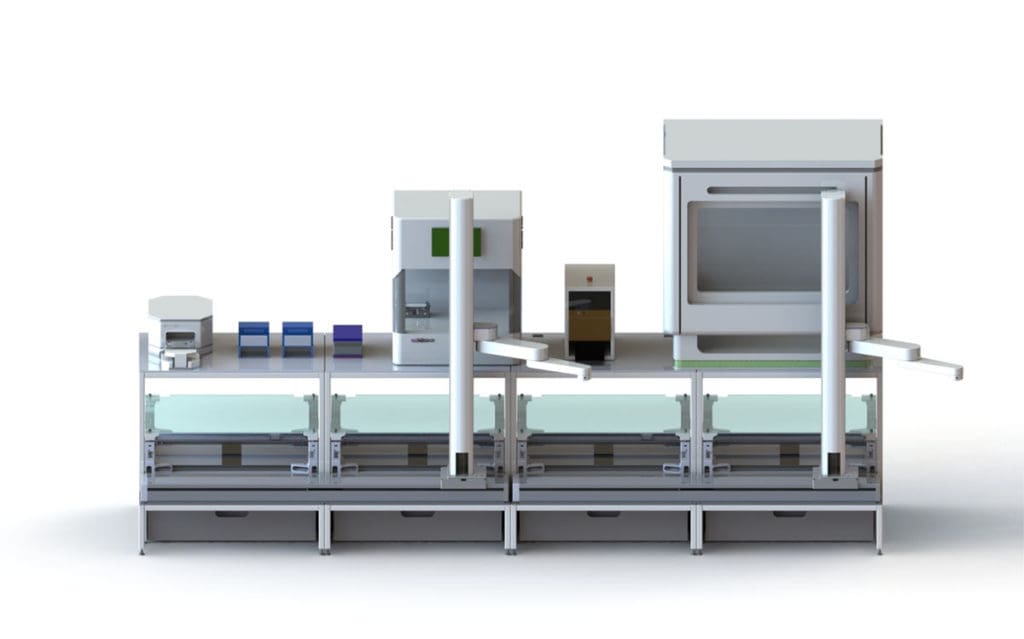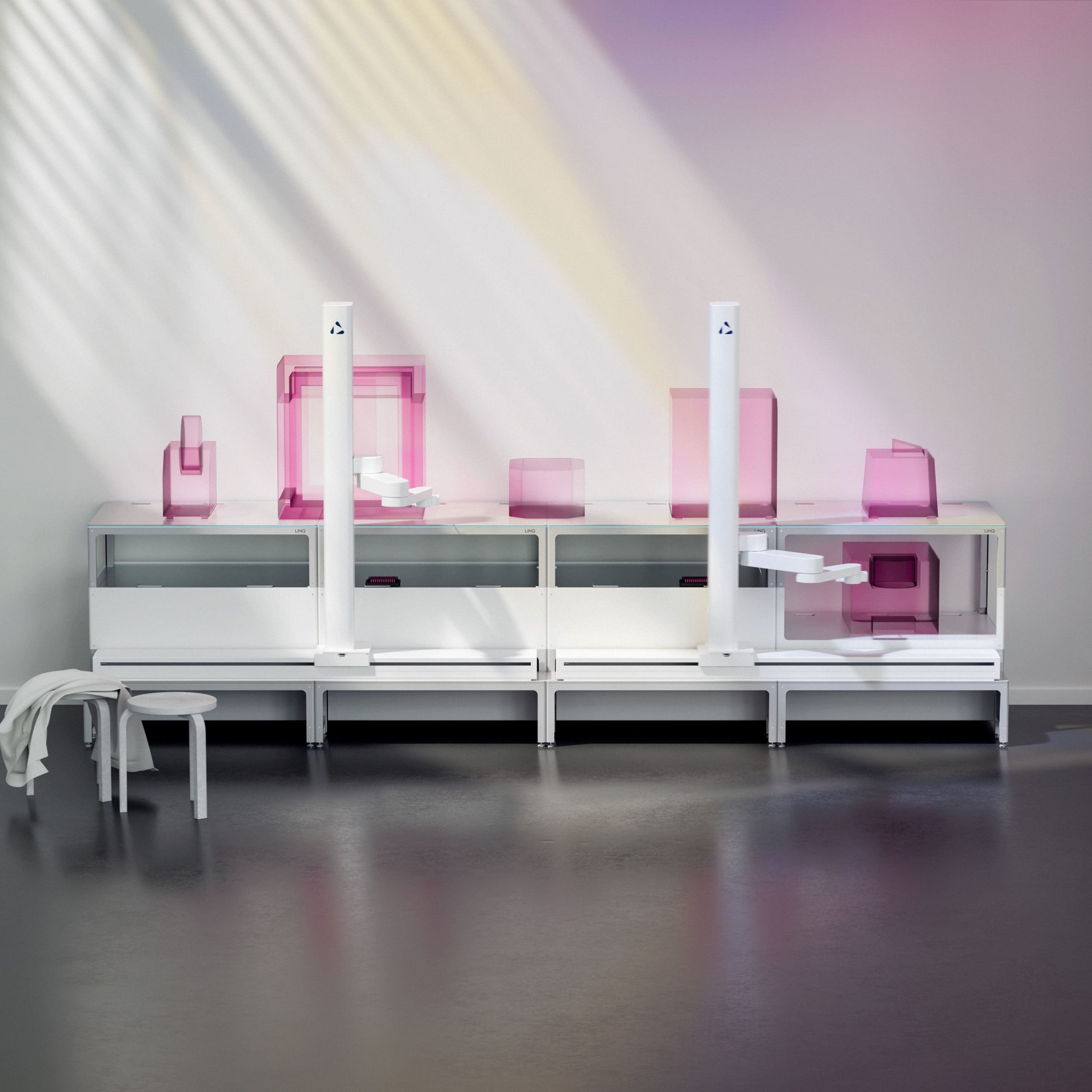

Unlock your lab’s potential with automation
Imagine what potential could look like for your science lab you were able to increase data quality, walkaway time, and throughput…without having to hire more people or find additional space. That’s what automation can do for you. Keep reading to find out more.
Many leading global economies have set the life sciences sector squarely in the centre of their growth plans, and yet, laboratory space is scarce in some regions and the STEM skills gap continues to affect lab resourcing.
While the focus on the industry is hugely promising, it’s left many businesses with one burning question: how can I help my people and my lab realise their potential when resources are limited?
Before answering that, science labs must identify what the real barriers to reaching this potential really are:
- Sample size and/or quality
- Restrictive instrumentation, workcells or protocols
- Or underperforming resources
For labs that have these challenges, next-generation automation could be the key. Here’s how.
Improving sample size and data quality
Large-scale sequencing requires bigger samples and higher quality extractions, and those two things are often compromised when labs think about scaling up.
Automating individual lab processes with benchtop automation has helped improve throughput and turnaround time in some cases, but simply adding more equipment to achieve bigger results isn’t a practical solution.
More instrumentation means more space is necessary, more people are needed, and the potential for human error is increased.
What automation really needs to do is to integrate equipment available into seamless, human-free workflows that are then executed accurately and effectively, ensuring scientists are able to walk away confident in the results the automation will provide.
If automation solutions are able to reduce human interactions, parallelise processes, and secure traceability, lab teams can unlock the potential of the lab without worrying about the impact on them or their quality of work.
Removing restrictions
What success looks like for life science labs is often changeable. After all, demand fluctuates, product life cycles are volatile, and the global influences that dictate the direction of research-based organisations are, at best, unpredictable. If that’s the case, trying to drive growth in a lab that doesn’t offer real flexibility is nonsensical.
To ensure that investment in automation remains secure and future-proof, it’s critical to look for solutions that:
- Can adapt easily in terms of chemistries, instrumentation and protocols
- Are modular so that they work with spaces rather than against them
- Won’t require additional investment in things like more people in order to use it
We have worked on developing an open, integrated automation (OIA) solution that delivers on those three things, facilitating lab flexibility rather than restricting it. We want our labs to realise their potential whatever that looks like – now and in the future.
That OIA solution is called LINQ.
LINQ digitally and robotically connects instruments within individual workcells, or entire workflows, optimising them for increased productivity, removing manual interventions for improvements in reliability and traceability, all while allowing you to stay flexible.
It comprises the modular LINQ bench system, LINQ Cloud software, and an Automata service team who will support your lab on its automation journey.
Take a look at how LINQ can work for quality control, and media exchange and supernatant sampling workflows, below.
Optimising resource
We’ve worked with many customers who have instrumentation that isn’t working at anywhere close to 100% capacity.
The reasons for this are varied, but usually, it’s because typical machines or workcells are operating as individual components of a broader workflow, so are idle during the times other processes are taking place. It can also be down to bottlenecks in parts of the process that are under-resourced – for example where technicians need to make manual transfers.
There are of course reasons you may want to keep certain manual processes or maintain instrument independence, which is why an approach to automation that is vendor agnostic and flexible is so important.
Optimisation with LINQ means redefining automation so that nothing is underutilised but access and flexibility aren’t compromised.
Science lab potential, realised
One UK-based genomics testing lab we worked with was struggling to scale, with inflexible automation causing bottlenecks in their workflow.
When the lab changed its DNA library preparation process to use 384-well microplates rather than 96-well microplates, their existing automation wasn’t able to accommodate it and staff were required to move plates manually.
We automated the whole DNA library preparation system without affecting their existing automated processes, and manual interactions were reduced by 95.3%.

Thirteen pieces of their existing equipment were integrated into the automated workflow and optimised to operate concurrently, while full traceability for each sample and automated entry of test data into the lab’s LIMS was maintained.
This solution not only reduced errors and improved data quality, but it also optimised the labs’ equipment and gave scientists true walkway for the first time.
Are you future-ready?
The benefits automation brings should be far-reaching, fulfilling the demands of a growing sector while positively impacting those who choose to dedicate their lives to helping us live ours.
Whatever potential means for you now or in the future, it’s critical to invest in automation solutions designed to help you reach your potential rather than stifle it.
Unlock the potential of your science lab with LINQ.
Speak to the Automata team to find out more, or request a demo today.


